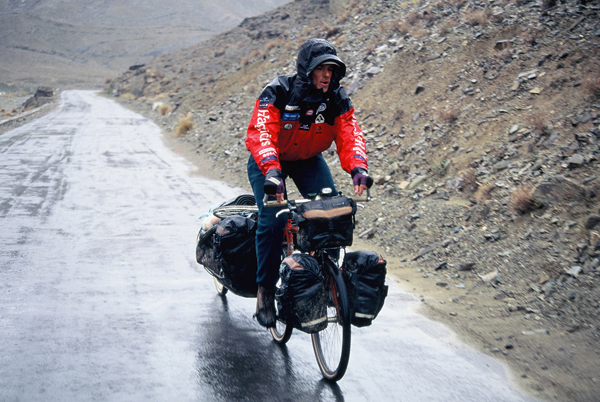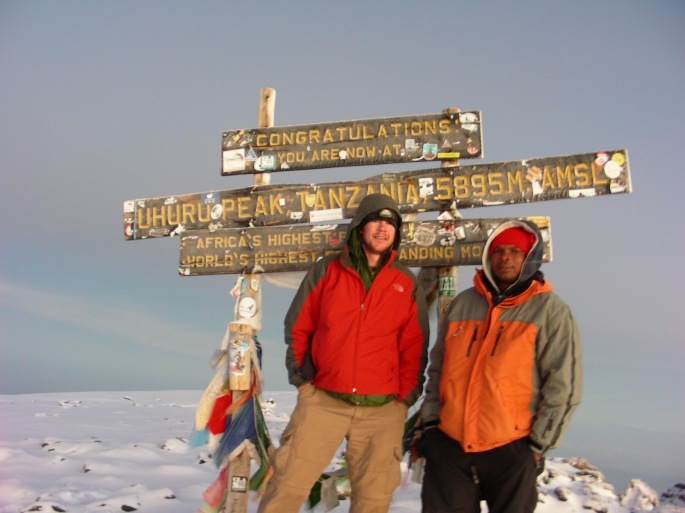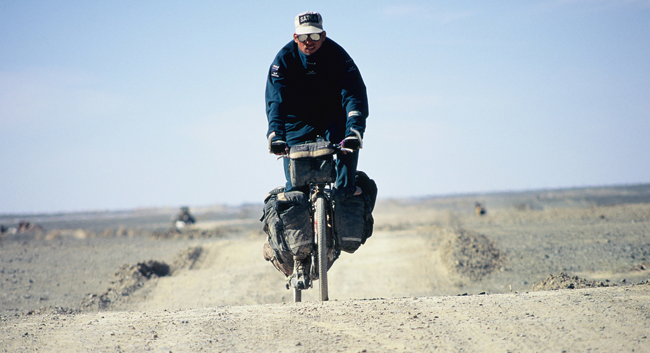
Göran Kropp
Ebullient Swedish adventurer who climbed Everest alone and trekked to the North Pole
“I wanted an adventure that was truly unprecedented,” said Göran Kropp, who has died in a climbing accident aged 35, and in 1996 he achieved just that. Climbing on his bicycle in his native Sweden, his gear packed in panniers and a trailer, he pedalled off to Nepal. There, he climbed Everest without bottled oxygen, relying only on his own strength to carry his tent and supplies up the mountain.
At base camp, extravagantly equipped American expeditions, recalled in Jon Krakauer’s bestseller Into Thin Air, dubbed Kropp the “crazy Swede”, an image that he relished. Tall, broad and beefier than a Charolais, when Kropp gripped an ice axe, you feared for the beaches of Lincolnshire. But while most writers saw the Viking in him, the mask concealed a gentle, reflective and intelligent man, with an essential attention to detail.
Kropp’s passion for mountains started early. Through binoculars, he would watch his father, a human rights lawyer, climbing on the steep limestone cliffs of the Italian Dolomites. At the age of six, he was led by his dad up Galdhøppigen, the highest peak in Norway. But after his parents divorced, his mother returned to Sweden and climbing lost its appeal.
Instead, Kropp spent his teenage years in extravagant rebellion, combining a musical passion for reggae, prog rock and punk. By 16, he had his own apartment, which he painted in Rasta colours, and spent his high school years going to gigs, forming an unlikely friendship with the Swedish singer Eva Dahlgren after he cadged a lift home from her after one of her concerts. Once his appetite for partying burned out, he joined the Swedish paratroopers, where his reputation for eccentric behaviour and outrageous trials of strength was established.

Kropp met Mats Dahlin, a young soldier passionate about climbing, and, bored by military discipline, felt his old enthusiasm returning. The travel, hardship, joy and lack of regulation that mountaineering encapsulated was the natural environment for Kropp’s rebellious streak.
The difficulty was cash. Earning a pittance in the army, he abandoned his apartment and moved into a tent pitched in a gravel pit close to the barracks. He dreamt up surreal tests of endurance to train for the mountains. Setting his alarm clock randomly, he would rise at 3am and march 30km in full kit; if it was 6am, he would march 60km.
Kropp’s career began in isolation, his ambitions gleaned from books, and his talent was geared more towards the grand gesture than technical brilliance. He and Dahlin drew up a list of progressively higher mountains as a plan to reach 8,000 metres, the so-called “death zone”.
Along the way, Kropp became absorbed in the unconventional and risky lifestyle. He contracted typhoid in Ecuador, and lay delirious and alone in a dosshouse. In the next bed was a man with a pistol under his pillow who claimed to be Bruce Lee’s brother. In Kathmandu, Kropp married a Nepali woman to qualify for a cheaper Everest permit. He took up paragliding and, when the money started to flow, bought a share in a racing car.
In 1993, after becoming the first Swede to climb K2, he left the army and hit the lecture circuit with extrovert, self-mocking performances. He loved being on stage, and debunking the inflated egos of mediocre climbers swarming over Everest.

Kropp’s ebullience, however, got him into trouble. He lost a libel action in London after confusing the names of two British climbers in his autobiography, accusing the wrong man of liking a drink. Then, after he shot a polar bear while trekking to the North Pole, the Swedish press turned against him, and he moved to Seattle.
Behind the stage performances and booming laughter, Kropp was a sensitive soul, deeply affected by the death of his climbing partner Dahlin while training in the Alps. He was also a highly intelligent organiser with an appetite for the latest technology. But while some of his competitors used these advances to repeat old challenges more easily, Kropp wanted to push limits.
His Everest climb was the supreme example of this trait. It mixed meticulous attention to detail with the serendipity his personality seemed to generate. On the trip out, he found lodgings in a Hungarian brothel, and was routinely stoned as he pedalled through Iran.
On the mountain itself, he returned for a summit run three times before success came, an astonishing effort for a man breathing only the thin air of altitude. At base camp, his fiancé Renata Chlumska, an Everest climber herself, waited anxiously as Kropp came close to death struggling to the summit. The irony of his death, falling from a routine, 70ft rock climb near his home in Seattle, is too much.

*#183; Göran Kropp, mountaineer and adventurer, born November 12 1966, died September 30 2002
